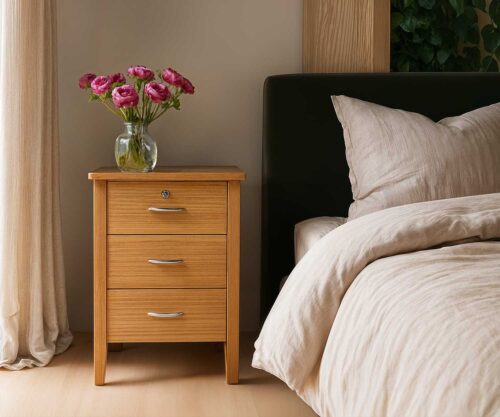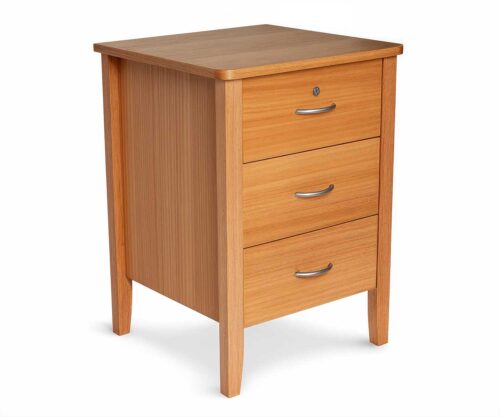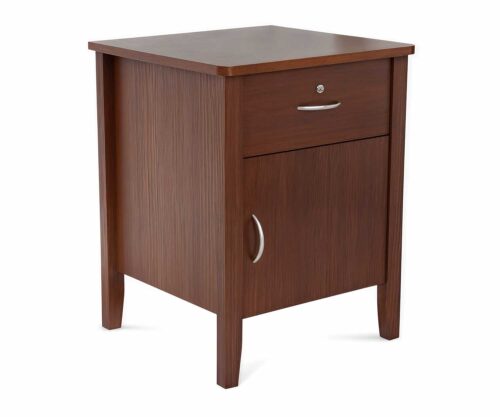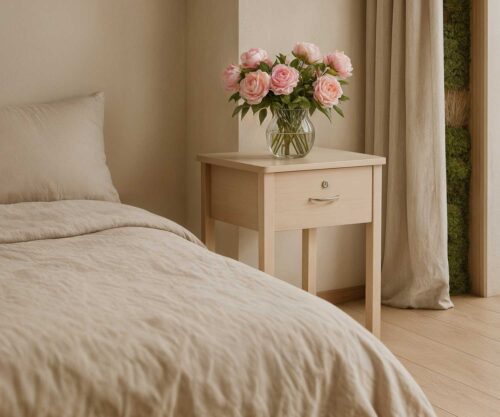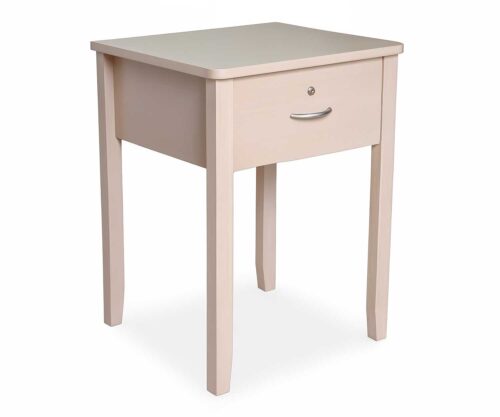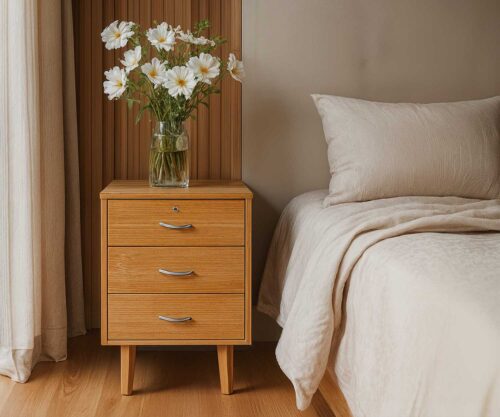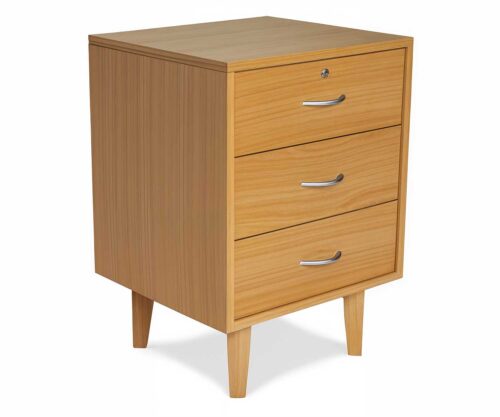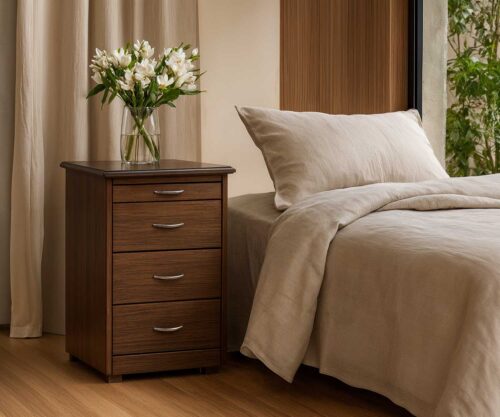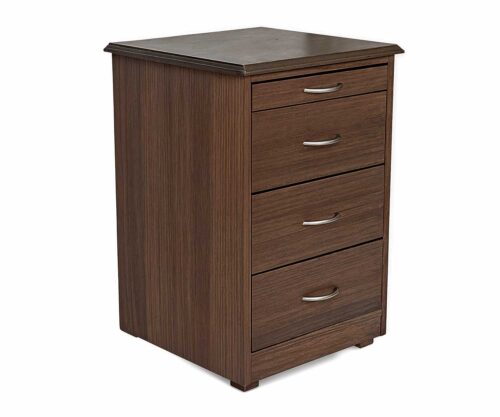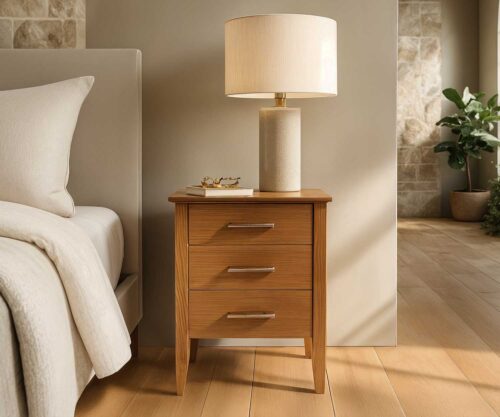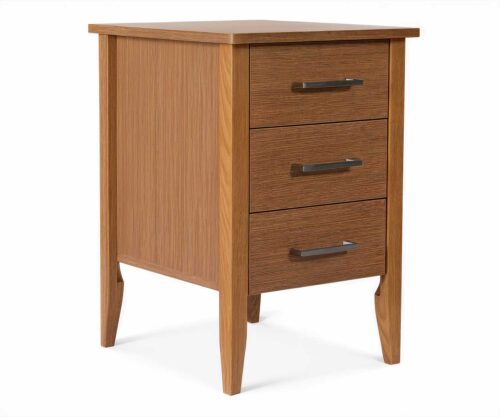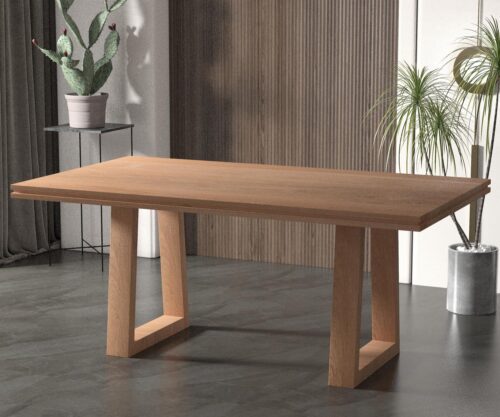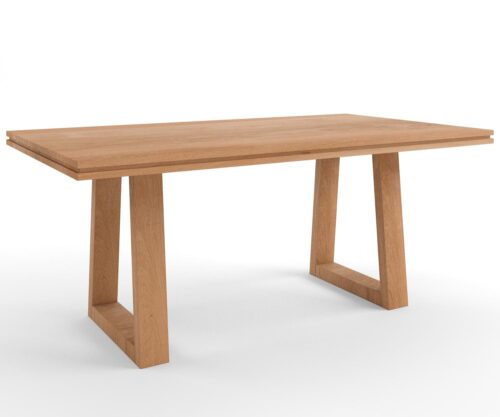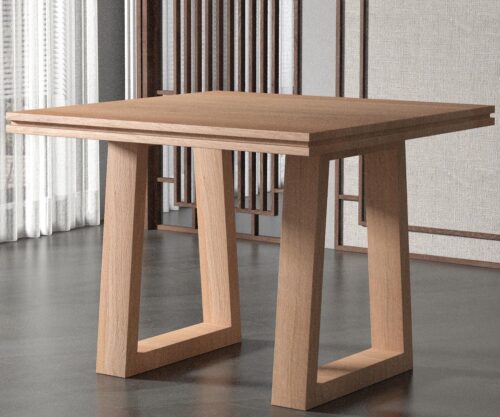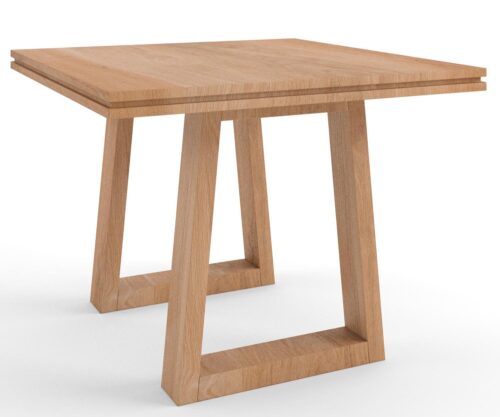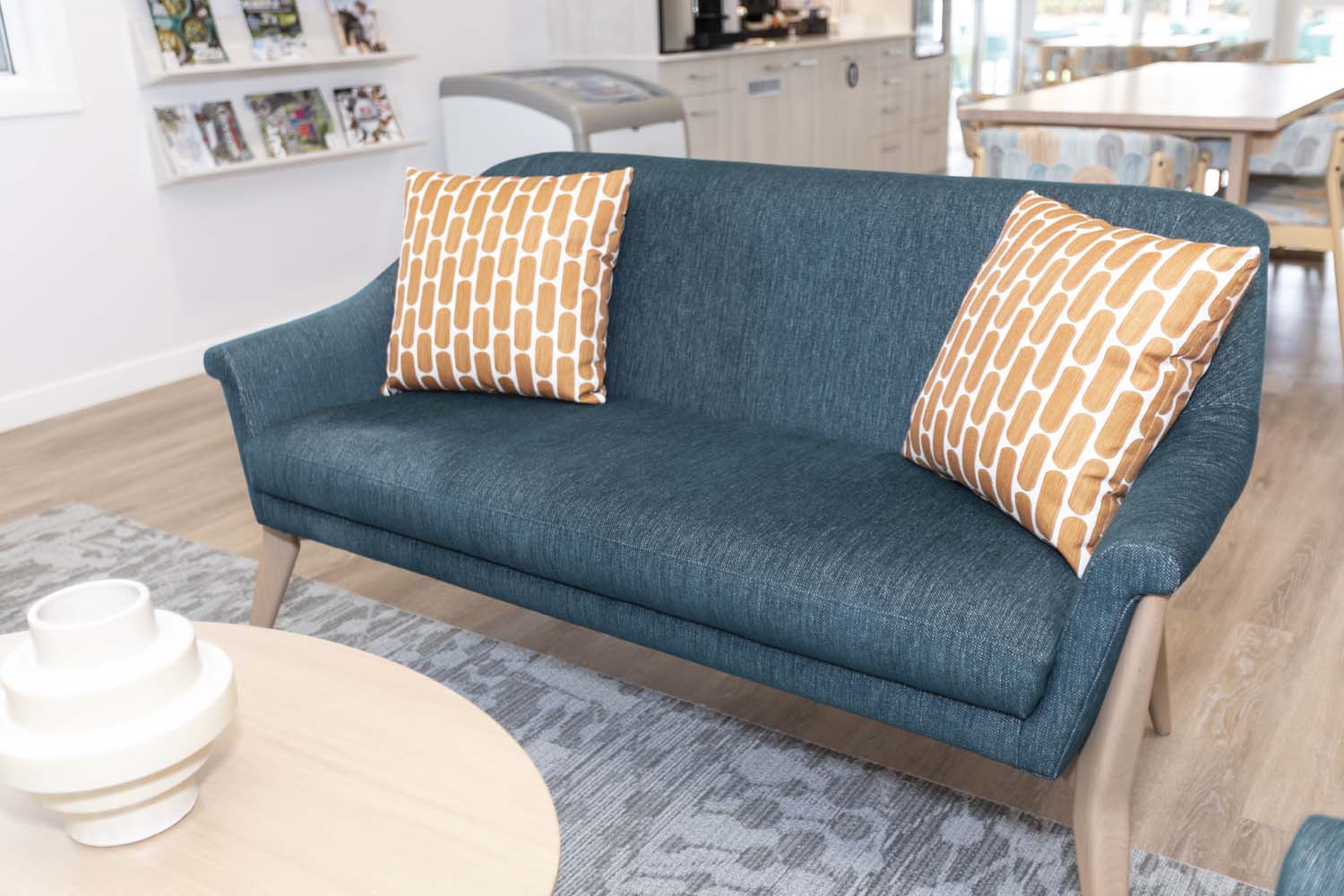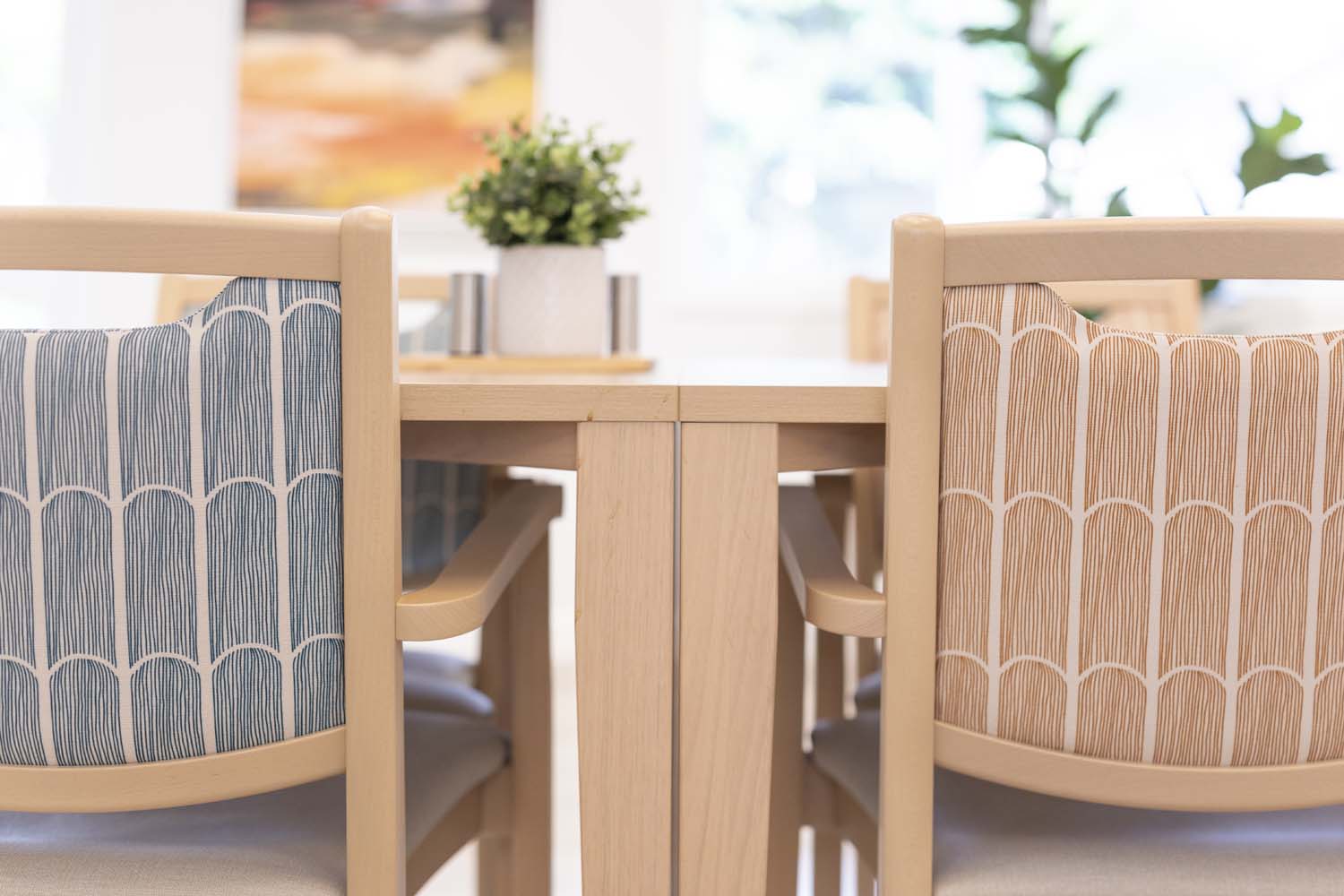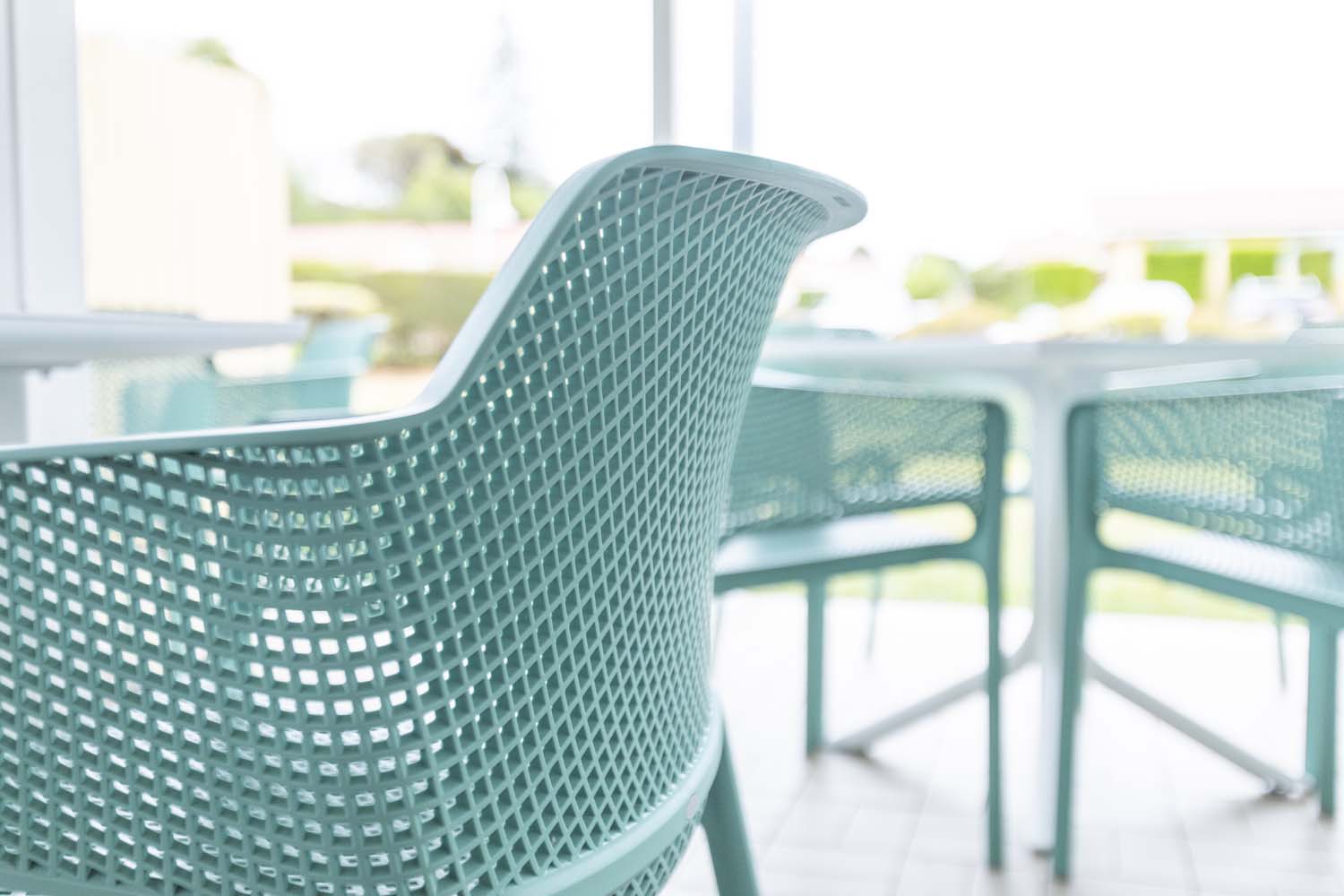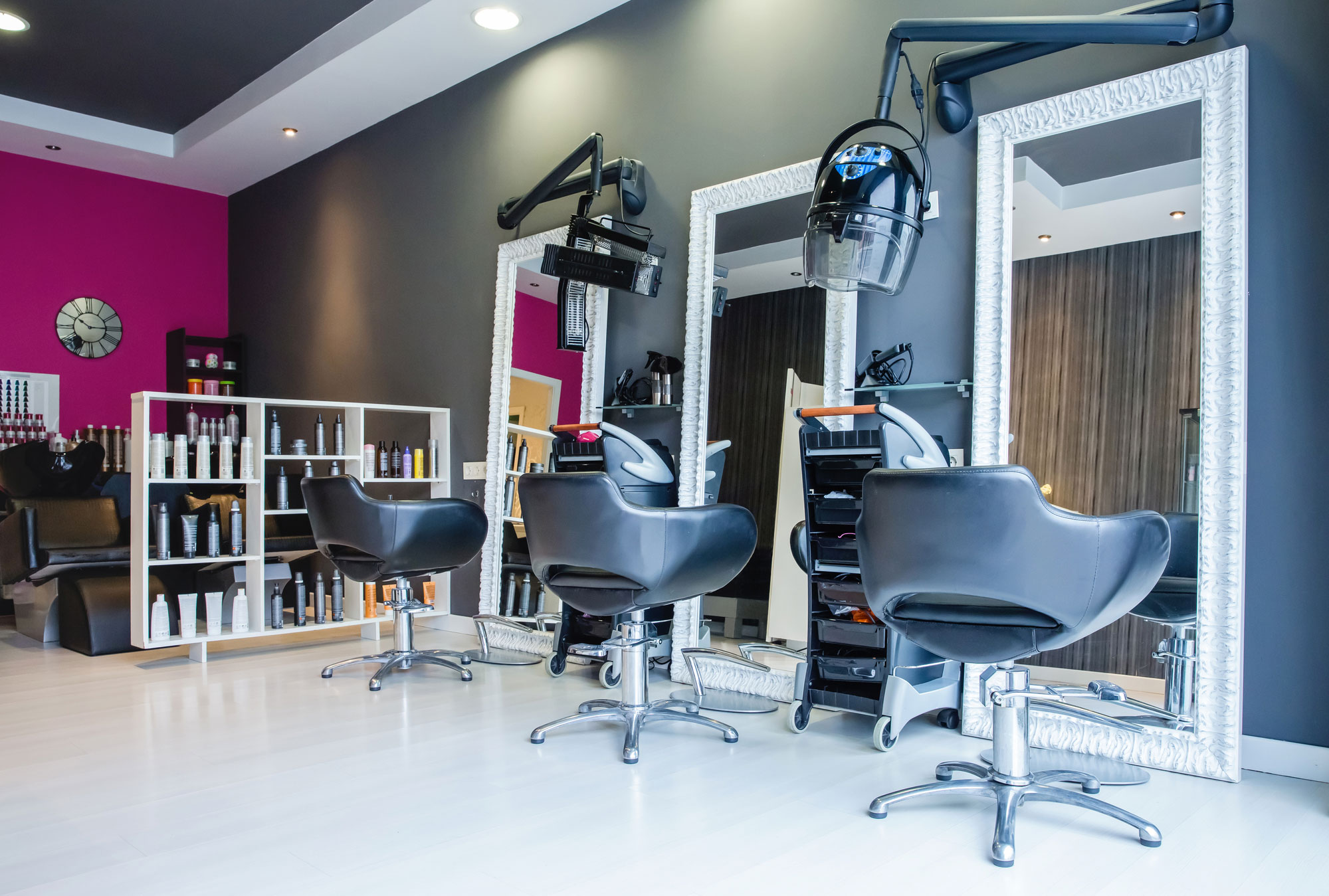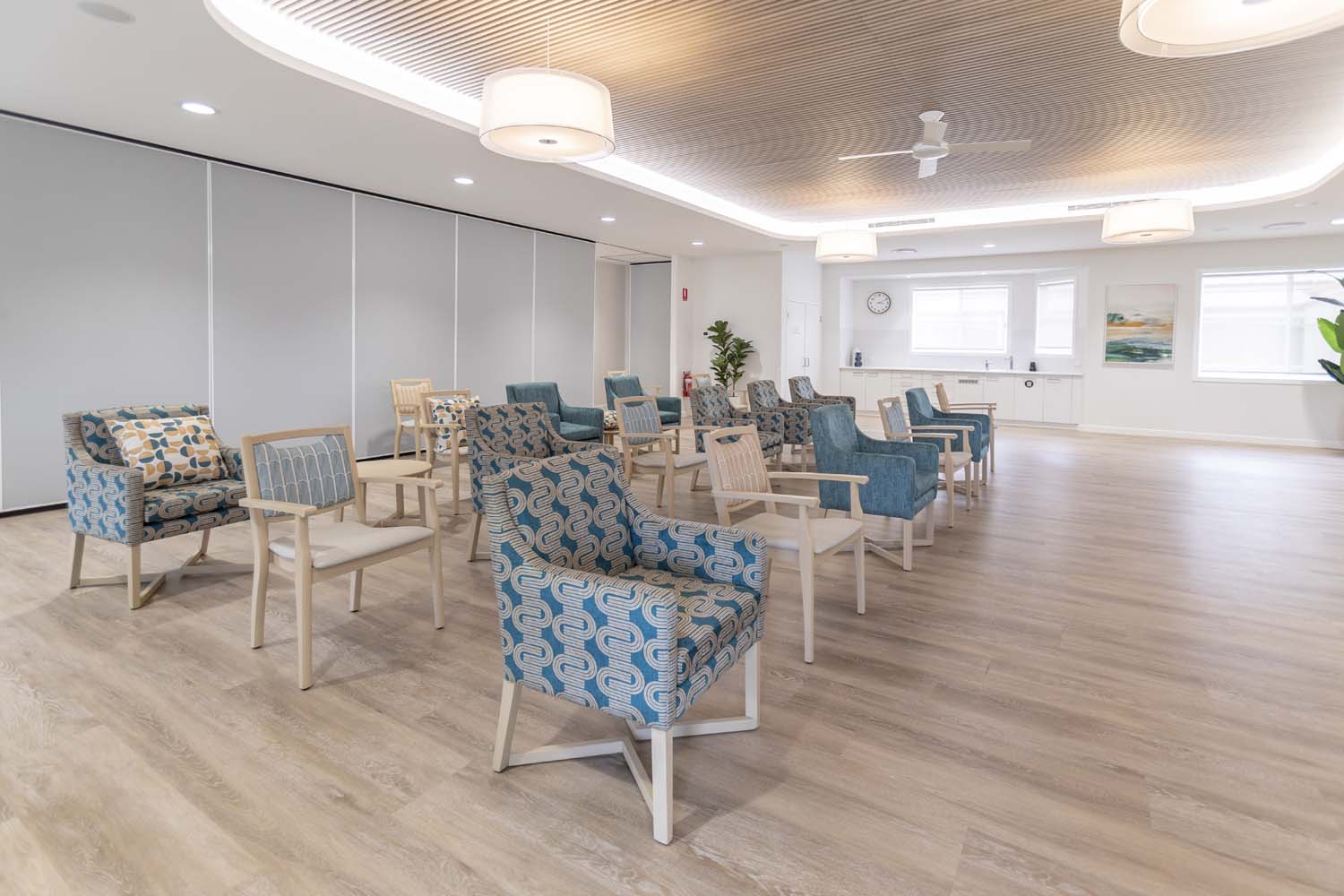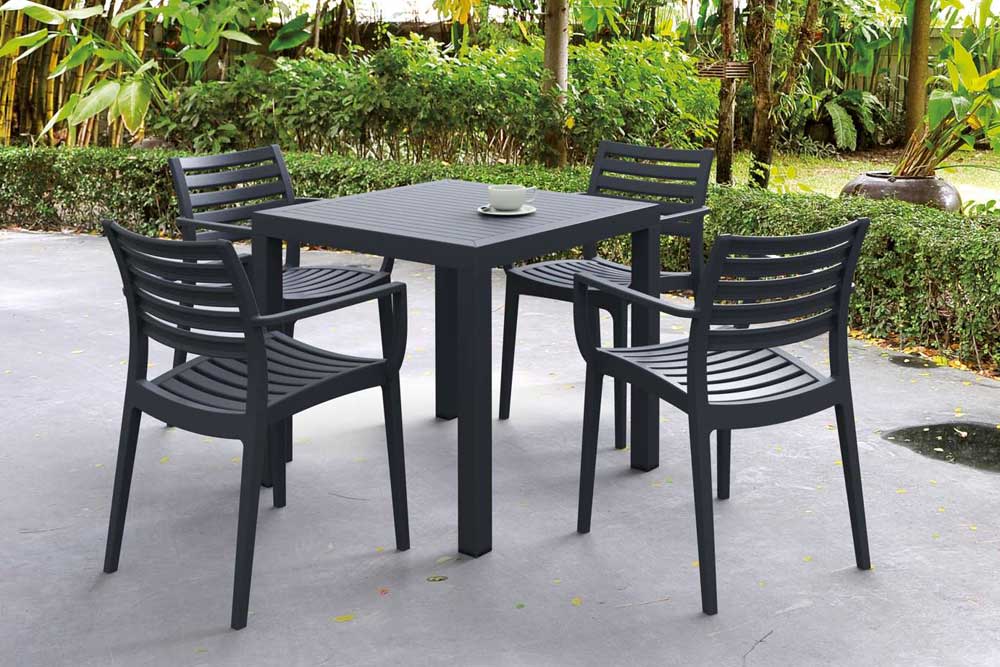Designing Inspiring Study Environments: A Practical Guide to Choosing Library Chairs for Australian Universities
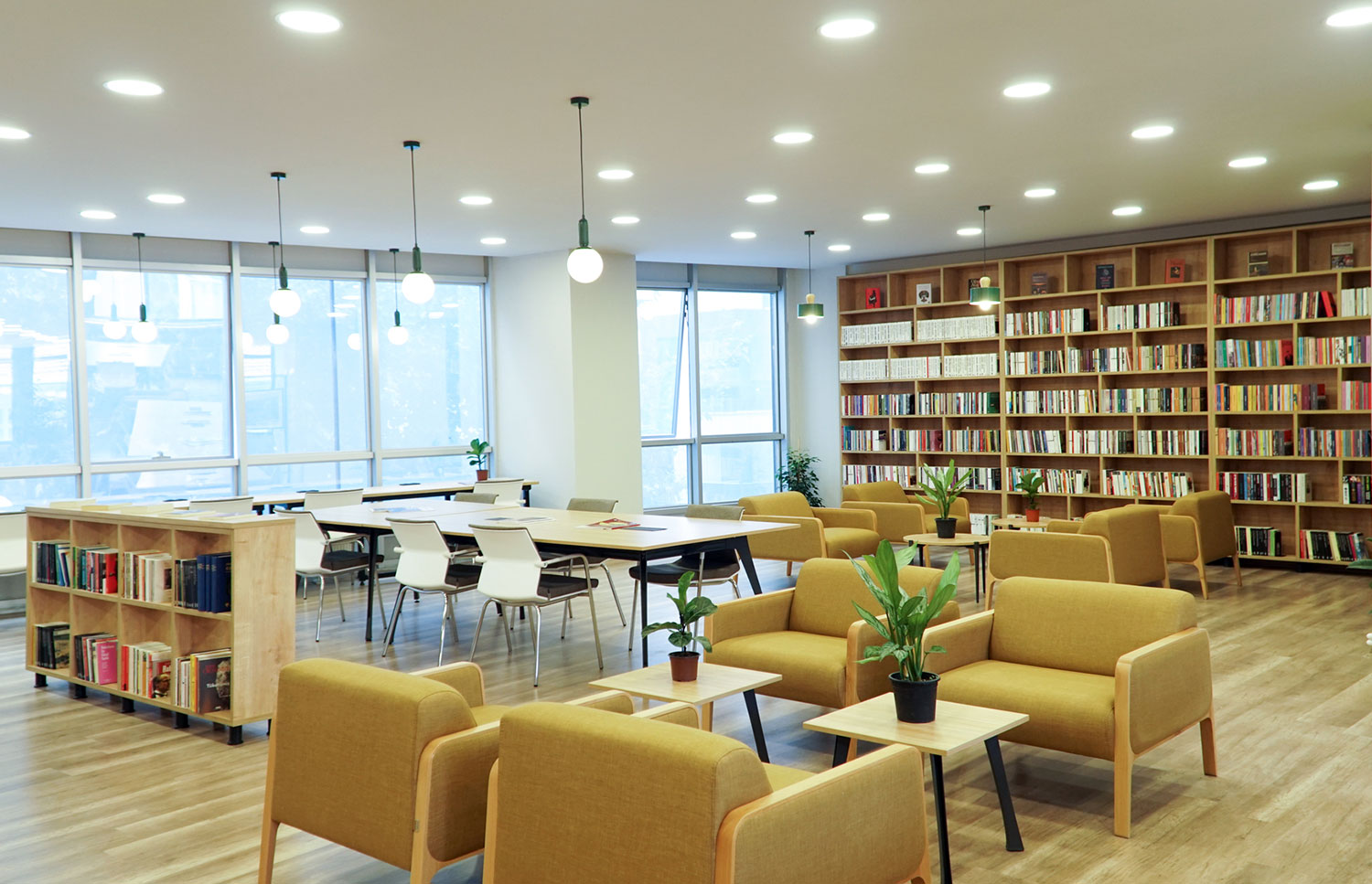
Creating conducive study environments is crucial in fostering academic success, and the choice of furniture plays a pivotal role in shaping these spaces. For Australian universities striving to design inspiring study environments, the selection of library chairs is a key consideration.
In this practical guide, we’ll explore essential factors and expert tips to help procurement managers make informed decisions when choosing the best library chairs for academic institutions across Australia.
See also: Must-Ask Questions for Student Accommodation Furniture Procurement Challenges
Understanding User Needs
The foundation of an inspiring study environment lies in a deep understanding of the diverse needs and preferences of university students. Recognizing that students engage in a variety of study activities, from intense solo research to dynamic group collaboration, is essential for selecting library chairs that cater to this spectrum of learning styles.
Individual Study Preferences
Consider the habits and preferences of students engaged in individual study sessions. Some may prefer a quiet, focused atmosphere for in-depth research, requiring chairs that provide a sense of personal space and concentration. Opt for designs that offer comfort without being overly restrictive, providing an environment conducive to individual intellectual pursuits.
Collaborative Workspaces
With the increasing emphasis on collaborative learning, many students engage in group projects and study sessions. For these scenarios, choose library chairs that facilitate easy collaboration. Look for options that allow for flexible seating arrangements, such as chairs with swivel bases or those that can be easily grouped together. The goal is to create spaces where students can comfortably work together and exchange ideas.
Ergonomic Considerations
Recognizing that students spend extended periods in study environments, prioritize chairs that prioritize ergonomics. Ensure that the chairs provide proper lumbar support, are adjustable to accommodate various body types, and promote good posture. Ergonomically designed chairs not only contribute to the physical well-being of students but also enhance their focus and productivity during lengthy study sessions.
Versatility for Multi-Functional Spaces
Given the multifunctional nature of modern university libraries, where spaces often serve dual purposes, choose library chairs that can adapt to a variety of activities. Chairs that are lightweight, easily movable, or even stackable provide flexibility in transforming spaces for different functions, from lectures to workshops to quiet study zones.
Consideration for Specialized Needs
Acknowledge that the student population includes individuals with diverse needs, such as those with mobility challenges or specific health considerations. Ensure that the selected library chairs accommodate these special requirements, promoting inclusivity and ensuring that the study environment is accessible to all.
By comprehensively understanding the nuanced needs of students, from their study habits to their physical well-being, procurement managers can guide the selection of library chairs that contribute not only to comfort and functionality but also to the creation of a truly inclusive and inspiring study environment within Australian universities.
Ergonomics for Long Study Sessions
Recognizing the demands of academia and the extended study sessions undertaken by university students, prioritizing ergonomic design in library chairs becomes paramount. The goal is to create an environment that not only supports the physical well-being of students but also enhances their focus, productivity, and overall study experience.
Lumbar Support and Posture
Start by considering chairs that provide adequate lumbar support, crucial for maintaining the natural curve of the spine. The lumbar region bears the brunt of prolonged sitting, and proper support helps prevent discomfort and fatigue. Chairs with adjustable lumbar support allow students to personalize their seating for optimal comfort.
Adjustability for Individual Comfort
Opt for chairs with adjustable features that accommodate various body types and preferences. Height-adjustable chairs ensure that students can align their seating with their individual desk or table heights, reducing the risk of strain or discomfort. Adjustable armrests and seat depth further contribute to creating a customized and ergonomic seating experience.
Dynamic Movement Options
Encourage movement during long study sessions by choosing chairs that offer dynamic features. Swivel bases or chairs with slight tilting mechanisms promote subtle shifts in posture, preventing stiffness and promoting blood circulation. These options empower students to adapt their seating positions to maintain alertness and engagement.
Comfortable Seat Padding
The seat itself plays a crucial role in ensuring comfort during extended periods of sitting. Look for chairs with ample, supportive padding that distributes weight evenly. This not only prevents pressure points but also contributes to a more comfortable and enjoyable study experience.
Breathable Materials
Consider the materials used in the construction of the chairs, opting for breathable fabrics or mesh designs. Adequate ventilation prevents discomfort associated with prolonged sitting, particularly during warmer seasons. Breathable materials enhance overall comfort and contribute to a more pleasant and focused study environment.
Promoting Natural Movement
Ergonomic chairs should facilitate natural movement. Encourage a slight recline in the chair to ease pressure on the lower back, promoting a more relaxed and sustainable sitting posture. Chairs that mimic the body’s natural movements contribute to overall well-being and help combat the negative effects of prolonged sedentary behavior.
By prioritizing these ergonomic considerations in the selection of library chairs, procurement managers can ensure that the study environments in Australian universities are not only visually appealing but also conducive to the health and productivity of students during their extended study sessions.
Durability and Maintenance
The selection of library chairs for Australian universities involves more than just choosing aesthetically pleasing designs; it requires a thoughtful consideration of durability and maintenance factors. Recognizing the high traffic and continuous usage within university libraries, it becomes imperative to invest in chairs that not only withstand the rigors of everyday use but also require minimal upkeep to ensure a pristine and inviting study environment.
Robust Materials and Construction
Begin by opting for chairs constructed from robust materials known for their durability. Sturdy metals, reinforced plastics, or quality hardwoods are excellent choices that can withstand the frequent use characteristic of university settings. A robust frame ensures the longevity of the chair, even in high-traffic areas.
Wear-Resistant Upholstery
Pay close attention to the upholstery materials, selecting options that are wear-resistant and easy to clean. Durable fabrics or leather alternatives not only contribute to the chair’s lifespan but also simplify maintenance. The ability to resist stains and general wear ensures that the chairs maintain their aesthetic appeal over time.
Stain-Resistant Finishes
Choose chairs with finishes that are resistant to stains and spills. This consideration is particularly important in environments where students may have food and beverages while studying. Stain-resistant coatings not only simplify cleaning but also contribute to the overall cleanliness and hygiene of the study spaces.
Easy-to-Clean Design
Prioritize chairs with a design that facilitates easy cleaning. Seamless or easily accessible joints and crevices minimize the accumulation of dust and debris, streamlining the maintenance process. Chairs with removable and washable seat cushions or covers offer an added advantage, allowing for quick and thorough cleaning when needed.
Scratch-Resistant Surfaces
Recognizing that chairs may be frequently moved or rearranged in university libraries, opt for designs with scratch-resistant surfaces. This feature helps maintain the aesthetic integrity of the chairs, preventing visible damage that may occur during handling or reconfiguration of study spaces.
Manufacturer Recommendations
Consult manufacturer guidelines for maintenance and care. Following recommended cleaning methods, suggested cleaning agents, and maintenance schedules can significantly extend the lifespan of library chairs. Manufacturers often provide valuable insights into ensuring the chairs remain in optimal condition over the years.
Proactive Maintenance Protocols
Implement proactive maintenance protocols to address minor issues before they escalate. Regular checks for loose screws, worn-out parts, or any signs of structural wear can help identify and rectify potential problems early on, contributing to the longevity of the chairs and minimizing the need for major repairs.
By prioritizing durability and maintenance in the procurement process, universities can make a sustainable investment in library chairs that not only withstand the test of time but also contribute to a consistently inviting and well-maintained study environment for students.
Adaptability to Various Spaces
The modern university library is no longer confined to traditional silent study areas. It has evolved into dynamic spaces accommodating diverse learning activities, from individual research to collaborative group work. Therefore, when selecting library chairs for Australian universities, a key consideration is their adaptability to various spaces within the library environment.
Flexible Seating Arrangements
Opt for library chairs that facilitate flexible seating arrangements. This adaptability is crucial for transforming spaces based on different needs, such as lectures, workshops, or group discussions. Chairs with modular designs or those that are easily movable enable procurement managers to create dynamic layouts to suit the evolving requirements of the library.
Stackable and Nesting Designs
Consider chairs with stackable or nesting designs, allowing for efficient storage when not in use. Stackable chairs are ideal for optimizing space in storage rooms or when transitioning between different room configurations. This adaptability ensures that the library can quickly and easily adapt to varying demands, making the most of available space.
Multipurpose Furniture
Embrace the concept of multipurpose furniture that serves dual functions. Chairs that can also function as writing surfaces or incorporate built-in tablet holders cater to the diverse needs of students. This adaptability enhances the versatility of the library, transforming it into a multifunctional space that accommodates a range of academic activities.
Adjustable Configurations
Look for chairs that allow for adjustable configurations. This feature is particularly useful in spaces that need to cater to both individual and collaborative study sessions. Chairs that can be easily rearranged or linked together offer procurement managers the flexibility to create customized layouts based on the specific requirements of each space.
Consideration for Varied Environments
Recognize that library spaces can vary widely, from traditional reading rooms to modern collaborative zones. Choose chairs that seamlessly transition between these environments. A chair that thrives in both quiet, individual study areas and vibrant, interactive group spaces ensures a cohesive and adaptable design that aligns with the diverse needs of the student population.
Integration with Technology
Given the increasing reliance on technology in academic settings, consider chairs that integrate seamlessly with modern tech requirements. This might include chairs with built-in power outlets, USB ports, or even wireless charging capabilities. Such technological adaptability ensures that students can easily plug in and stay connected, enhancing the functionality of library spaces.
Future-Proof Design
Anticipate future changes in the library’s layout and functionality. Choose chairs with a future-proof design that can adapt to evolving educational trends and the dynamic needs of students. This proactive approach ensures that the furniture investment remains relevant and effective in supporting diverse learning activities over time.
By prioritizing adaptability in the selection of library chairs, procurement managers empower Australian universities to create dynamic, responsive learning environments. This flexibility not only enhances the functionality of the library spaces but also contributes to a student-centric approach that fosters engagement and academic success.
Sustainability Considerations
In an era where environmental consciousness is paramount, the procurement of library chairs for Australian universities requires a thoughtful examination of sustainability considerations. As universities increasingly adopt eco-friendly practices, selecting chairs that align with sustainable principles becomes a strategic choice. Here are key factors to consider:
Eco-Friendly Materials
Choose library chairs crafted from eco-friendly and renewable materials. Opt for sustainably sourced wood, recycled metals, or materials with low environmental impact. Chairs made from recycled or upcycled materials contribute to the reduction of waste and support the circular economy.
Certifications and Standards
Look for chairs that adhere to recognized environmental certifications and standards. Certifications such as FSC (Forest Stewardship Council) for wood or GREENGUARD for low chemical emissions indicate a commitment to environmentally responsible manufacturing practices. These certifications provide assurance that the chairs meet stringent environmental criteria.
Energy-Efficient Production
Consider chairs produced using energy-efficient manufacturing processes. Manufacturers that prioritize energy conservation and employ renewable energy sources in their production contribute to reducing the overall carbon footprint associated with the creation of library chairs. Procuring chairs from such sources aligns with sustainability goals.
Durable and Long-Lasting Design
Sustainability is inherently tied to durability. Choose chairs designed for longevity, crafted with high-quality materials and robust construction. Durable chairs have a longer lifecycle, reducing the frequency of replacements and minimizing the environmental impact associated with the production and disposal of furniture.
Recyclability and Disposal
Assess the recyclability of the materials used in the chairs and the ease of disposal at the end of their lifecycle. Chairs designed with components that can be recycled or responsibly disposed of contribute to a more circular and sustainable approach. Consider collaborating with suppliers who offer take-back programs or recycling initiatives.
Local Sourcing and Manufacturing
Prioritize chairs sourced and manufactured locally to reduce transportation-related carbon emissions. Supporting local businesses not only stimulates the regional economy but also minimizes the environmental impact associated with the transportation of goods over long distances.
Carbon Footprint Considerations
Evaluate the overall carbon footprint of the chairs throughout their lifecycle. Consider factors such as raw material extraction, manufacturing processes, transportation, and end-of-life disposal. Selecting chairs with a lower carbon footprint contributes to the university’s broader sustainability initiatives.
Supplier Commitment to Sustainability
Collaborate with suppliers who demonstrate a clear commitment to sustainability. Inquire about their environmental policies, initiatives, and goals. Suppliers actively working towards reducing their environmental impact and promoting sustainable practices are valuable partners in advancing the university’s sustainability agenda.
By integrating sustainability considerations into the procurement process for library chairs, Australian universities not only make a positive impact on the environment but also set an example for students, faculty, and the broader community. This holistic approach aligns with the values of responsible and conscious consumption, contributing to a more sustainable and resilient future.
Designing inspiring study environments in Australian universities involves thoughtful consideration of every element, and library chairs are no exception. By understanding user needs, prioritizing ergonomics, ensuring durability, adapting to various spaces, harmonizing aesthetics, integrating technology, and considering sustainability, procurement managers can confidently choose the best library chairs to create dynamic and motivating learning spaces for students across the country.
Australian Made Library Furniture
We take pride in crafting high-quality library furniture in Australia, characterized by meticulous craftsmanship and durable materials, ensuring both functionality and aesthetic appeal.
More News
Designing Inspiring Study Environments: A Practical Guide to Choosing Library Chairs for Australian Universities

Creating conducive study environments is crucial in fostering academic success, and the choice of furniture plays a pivotal role in shaping these spaces. For Australian universities striving to design inspiring study environments, the selection of library chairs is a key consideration.
In this practical guide, we’ll explore essential factors and expert tips to help procurement managers make informed decisions when choosing the best library chairs for academic institutions across Australia.
See also: Must-Ask Questions for Student Accommodation Furniture Procurement Challenges
Understanding User Needs
The foundation of an inspiring study environment lies in a deep understanding of the diverse needs and preferences of university students. Recognizing that students engage in a variety of study activities, from intense solo research to dynamic group collaboration, is essential for selecting library chairs that cater to this spectrum of learning styles.
Individual Study Preferences
Consider the habits and preferences of students engaged in individual study sessions. Some may prefer a quiet, focused atmosphere for in-depth research, requiring chairs that provide a sense of personal space and concentration. Opt for designs that offer comfort without being overly restrictive, providing an environment conducive to individual intellectual pursuits.
Collaborative Workspaces
With the increasing emphasis on collaborative learning, many students engage in group projects and study sessions. For these scenarios, choose library chairs that facilitate easy collaboration. Look for options that allow for flexible seating arrangements, such as chairs with swivel bases or those that can be easily grouped together. The goal is to create spaces where students can comfortably work together and exchange ideas.
Ergonomic Considerations
Recognizing that students spend extended periods in study environments, prioritize chairs that prioritize ergonomics. Ensure that the chairs provide proper lumbar support, are adjustable to accommodate various body types, and promote good posture. Ergonomically designed chairs not only contribute to the physical well-being of students but also enhance their focus and productivity during lengthy study sessions.
Versatility for Multi-Functional Spaces
Given the multifunctional nature of modern university libraries, where spaces often serve dual purposes, choose library chairs that can adapt to a variety of activities. Chairs that are lightweight, easily movable, or even stackable provide flexibility in transforming spaces for different functions, from lectures to workshops to quiet study zones.
Consideration for Specialized Needs
Acknowledge that the student population includes individuals with diverse needs, such as those with mobility challenges or specific health considerations. Ensure that the selected library chairs accommodate these special requirements, promoting inclusivity and ensuring that the study environment is accessible to all.
By comprehensively understanding the nuanced needs of students, from their study habits to their physical well-being, procurement managers can guide the selection of library chairs that contribute not only to comfort and functionality but also to the creation of a truly inclusive and inspiring study environment within Australian universities.
Ergonomics for Long Study Sessions
Recognizing the demands of academia and the extended study sessions undertaken by university students, prioritizing ergonomic design in library chairs becomes paramount. The goal is to create an environment that not only supports the physical well-being of students but also enhances their focus, productivity, and overall study experience.
Lumbar Support and Posture
Start by considering chairs that provide adequate lumbar support, crucial for maintaining the natural curve of the spine. The lumbar region bears the brunt of prolonged sitting, and proper support helps prevent discomfort and fatigue. Chairs with adjustable lumbar support allow students to personalize their seating for optimal comfort.
Adjustability for Individual Comfort
Opt for chairs with adjustable features that accommodate various body types and preferences. Height-adjustable chairs ensure that students can align their seating with their individual desk or table heights, reducing the risk of strain or discomfort. Adjustable armrests and seat depth further contribute to creating a customized and ergonomic seating experience.
Dynamic Movement Options
Encourage movement during long study sessions by choosing chairs that offer dynamic features. Swivel bases or chairs with slight tilting mechanisms promote subtle shifts in posture, preventing stiffness and promoting blood circulation. These options empower students to adapt their seating positions to maintain alertness and engagement.
Comfortable Seat Padding
The seat itself plays a crucial role in ensuring comfort during extended periods of sitting. Look for chairs with ample, supportive padding that distributes weight evenly. This not only prevents pressure points but also contributes to a more comfortable and enjoyable study experience.
Breathable Materials
Consider the materials used in the construction of the chairs, opting for breathable fabrics or mesh designs. Adequate ventilation prevents discomfort associated with prolonged sitting, particularly during warmer seasons. Breathable materials enhance overall comfort and contribute to a more pleasant and focused study environment.
Promoting Natural Movement
Ergonomic chairs should facilitate natural movement. Encourage a slight recline in the chair to ease pressure on the lower back, promoting a more relaxed and sustainable sitting posture. Chairs that mimic the body’s natural movements contribute to overall well-being and help combat the negative effects of prolonged sedentary behavior.
By prioritizing these ergonomic considerations in the selection of library chairs, procurement managers can ensure that the study environments in Australian universities are not only visually appealing but also conducive to the health and productivity of students during their extended study sessions.
Durability and Maintenance
The selection of library chairs for Australian universities involves more than just choosing aesthetically pleasing designs; it requires a thoughtful consideration of durability and maintenance factors. Recognizing the high traffic and continuous usage within university libraries, it becomes imperative to invest in chairs that not only withstand the rigors of everyday use but also require minimal upkeep to ensure a pristine and inviting study environment.
Robust Materials and Construction
Begin by opting for chairs constructed from robust materials known for their durability. Sturdy metals, reinforced plastics, or quality hardwoods are excellent choices that can withstand the frequent use characteristic of university settings. A robust frame ensures the longevity of the chair, even in high-traffic areas.
Wear-Resistant Upholstery
Pay close attention to the upholstery materials, selecting options that are wear-resistant and easy to clean. Durable fabrics or leather alternatives not only contribute to the chair’s lifespan but also simplify maintenance. The ability to resist stains and general wear ensures that the chairs maintain their aesthetic appeal over time.
Stain-Resistant Finishes
Choose chairs with finishes that are resistant to stains and spills. This consideration is particularly important in environments where students may have food and beverages while studying. Stain-resistant coatings not only simplify cleaning but also contribute to the overall cleanliness and hygiene of the study spaces.
Easy-to-Clean Design
Prioritize chairs with a design that facilitates easy cleaning. Seamless or easily accessible joints and crevices minimize the accumulation of dust and debris, streamlining the maintenance process. Chairs with removable and washable seat cushions or covers offer an added advantage, allowing for quick and thorough cleaning when needed.
Scratch-Resistant Surfaces
Recognizing that chairs may be frequently moved or rearranged in university libraries, opt for designs with scratch-resistant surfaces. This feature helps maintain the aesthetic integrity of the chairs, preventing visible damage that may occur during handling or reconfiguration of study spaces.
Manufacturer Recommendations
Consult manufacturer guidelines for maintenance and care. Following recommended cleaning methods, suggested cleaning agents, and maintenance schedules can significantly extend the lifespan of library chairs. Manufacturers often provide valuable insights into ensuring the chairs remain in optimal condition over the years.
Proactive Maintenance Protocols
Implement proactive maintenance protocols to address minor issues before they escalate. Regular checks for loose screws, worn-out parts, or any signs of structural wear can help identify and rectify potential problems early on, contributing to the longevity of the chairs and minimizing the need for major repairs.
By prioritizing durability and maintenance in the procurement process, universities can make a sustainable investment in library chairs that not only withstand the test of time but also contribute to a consistently inviting and well-maintained study environment for students.
Adaptability to Various Spaces
The modern university library is no longer confined to traditional silent study areas. It has evolved into dynamic spaces accommodating diverse learning activities, from individual research to collaborative group work. Therefore, when selecting library chairs for Australian universities, a key consideration is their adaptability to various spaces within the library environment.
Flexible Seating Arrangements
Opt for library chairs that facilitate flexible seating arrangements. This adaptability is crucial for transforming spaces based on different needs, such as lectures, workshops, or group discussions. Chairs with modular designs or those that are easily movable enable procurement managers to create dynamic layouts to suit the evolving requirements of the library.
Stackable and Nesting Designs
Consider chairs with stackable or nesting designs, allowing for efficient storage when not in use. Stackable chairs are ideal for optimizing space in storage rooms or when transitioning between different room configurations. This adaptability ensures that the library can quickly and easily adapt to varying demands, making the most of available space.
Multipurpose Furniture
Embrace the concept of multipurpose furniture that serves dual functions. Chairs that can also function as writing surfaces or incorporate built-in tablet holders cater to the diverse needs of students. This adaptability enhances the versatility of the library, transforming it into a multifunctional space that accommodates a range of academic activities.
Adjustable Configurations
Look for chairs that allow for adjustable configurations. This feature is particularly useful in spaces that need to cater to both individual and collaborative study sessions. Chairs that can be easily rearranged or linked together offer procurement managers the flexibility to create customized layouts based on the specific requirements of each space.
Consideration for Varied Environments
Recognize that library spaces can vary widely, from traditional reading rooms to modern collaborative zones. Choose chairs that seamlessly transition between these environments. A chair that thrives in both quiet, individual study areas and vibrant, interactive group spaces ensures a cohesive and adaptable design that aligns with the diverse needs of the student population.
Integration with Technology
Given the increasing reliance on technology in academic settings, consider chairs that integrate seamlessly with modern tech requirements. This might include chairs with built-in power outlets, USB ports, or even wireless charging capabilities. Such technological adaptability ensures that students can easily plug in and stay connected, enhancing the functionality of library spaces.
Future-Proof Design
Anticipate future changes in the library’s layout and functionality. Choose chairs with a future-proof design that can adapt to evolving educational trends and the dynamic needs of students. This proactive approach ensures that the furniture investment remains relevant and effective in supporting diverse learning activities over time.
By prioritizing adaptability in the selection of library chairs, procurement managers empower Australian universities to create dynamic, responsive learning environments. This flexibility not only enhances the functionality of the library spaces but also contributes to a student-centric approach that fosters engagement and academic success.
Sustainability Considerations
In an era where environmental consciousness is paramount, the procurement of library chairs for Australian universities requires a thoughtful examination of sustainability considerations. As universities increasingly adopt eco-friendly practices, selecting chairs that align with sustainable principles becomes a strategic choice. Here are key factors to consider:
Eco-Friendly Materials
Choose library chairs crafted from eco-friendly and renewable materials. Opt for sustainably sourced wood, recycled metals, or materials with low environmental impact. Chairs made from recycled or upcycled materials contribute to the reduction of waste and support the circular economy.
Certifications and Standards
Look for chairs that adhere to recognized environmental certifications and standards. Certifications such as FSC (Forest Stewardship Council) for wood or GREENGUARD for low chemical emissions indicate a commitment to environmentally responsible manufacturing practices. These certifications provide assurance that the chairs meet stringent environmental criteria.
Energy-Efficient Production
Consider chairs produced using energy-efficient manufacturing processes. Manufacturers that prioritize energy conservation and employ renewable energy sources in their production contribute to reducing the overall carbon footprint associated with the creation of library chairs. Procuring chairs from such sources aligns with sustainability goals.
Durable and Long-Lasting Design
Sustainability is inherently tied to durability. Choose chairs designed for longevity, crafted with high-quality materials and robust construction. Durable chairs have a longer lifecycle, reducing the frequency of replacements and minimizing the environmental impact associated with the production and disposal of furniture.
Recyclability and Disposal
Assess the recyclability of the materials used in the chairs and the ease of disposal at the end of their lifecycle. Chairs designed with components that can be recycled or responsibly disposed of contribute to a more circular and sustainable approach. Consider collaborating with suppliers who offer take-back programs or recycling initiatives.
Local Sourcing and Manufacturing
Prioritize chairs sourced and manufactured locally to reduce transportation-related carbon emissions. Supporting local businesses not only stimulates the regional economy but also minimizes the environmental impact associated with the transportation of goods over long distances.
Carbon Footprint Considerations
Evaluate the overall carbon footprint of the chairs throughout their lifecycle. Consider factors such as raw material extraction, manufacturing processes, transportation, and end-of-life disposal. Selecting chairs with a lower carbon footprint contributes to the university’s broader sustainability initiatives.
Supplier Commitment to Sustainability
Collaborate with suppliers who demonstrate a clear commitment to sustainability. Inquire about their environmental policies, initiatives, and goals. Suppliers actively working towards reducing their environmental impact and promoting sustainable practices are valuable partners in advancing the university’s sustainability agenda.
By integrating sustainability considerations into the procurement process for library chairs, Australian universities not only make a positive impact on the environment but also set an example for students, faculty, and the broader community. This holistic approach aligns with the values of responsible and conscious consumption, contributing to a more sustainable and resilient future.
Designing inspiring study environments in Australian universities involves thoughtful consideration of every element, and library chairs are no exception. By understanding user needs, prioritizing ergonomics, ensuring durability, adapting to various spaces, harmonizing aesthetics, integrating technology, and considering sustainability, procurement managers can confidently choose the best library chairs to create dynamic and motivating learning spaces for students across the country.
Australian Made Library Furniture
We take pride in crafting high-quality library furniture in Australia, characterized by meticulous craftsmanship and durable materials, ensuring both functionality and aesthetic appeal.
Commercial furniture by room
Based in Brisbane, we’re an Australian manufacturer of aged care furniture, retirement living furniture, hospital & healthcare furniture, hotel & accommodation furniture and student accommodation furniture. We also supply a range of commercial office furniture.
Discover the FHG Look Book: Your Source of Inspiration for Quality Australian-Made Commercial Furniture
- Quality Craftsmanship: See why we’ve been a trusted partner for over 25 years.
- Local Excellence: Learn how our Brisbane team ensures the highest standards.
- Inspiration and Ideas: Find innovative furniture solutions for any environment.
Don’t miss the opportunity to transform your commercial space with FHG’s expertly crafted furniture. Download the FHG Look Book today and start your journey towards exceptional design and quality.

